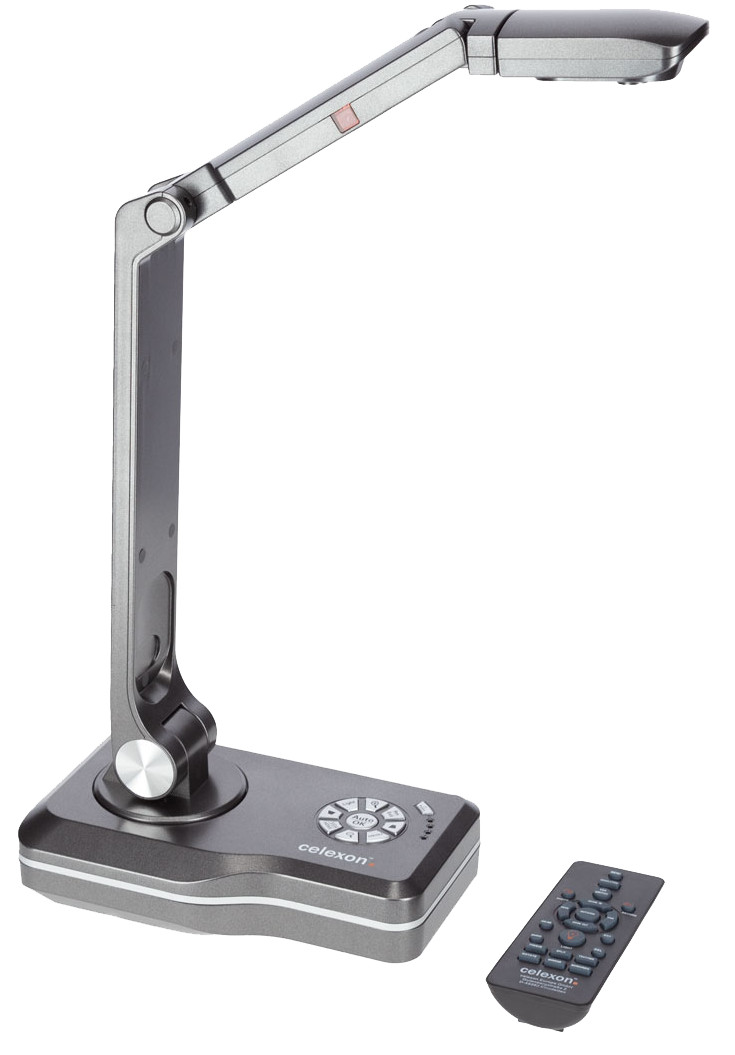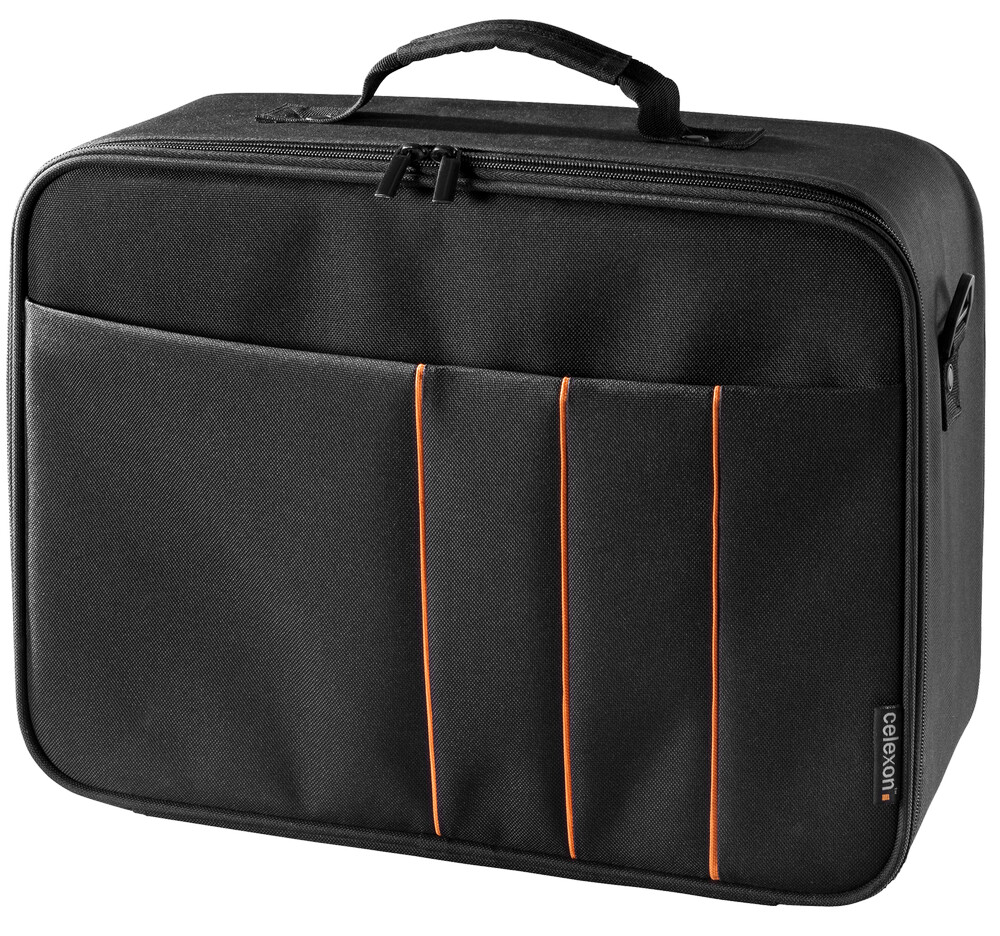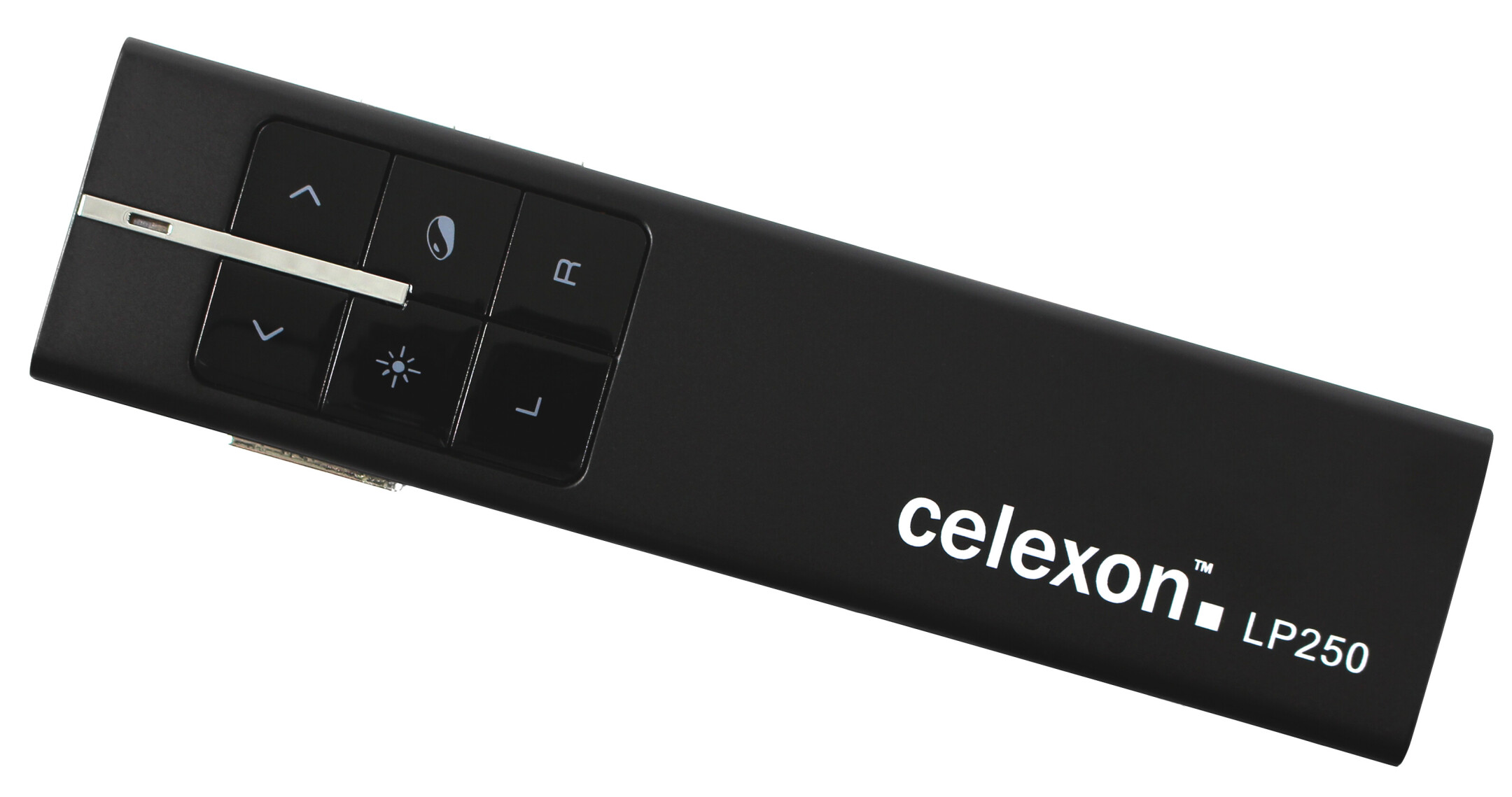



































£234.99*
- Resolution 1920 x 1080 Full HD
- Camera resolution 5 MP
- Focus type Manual & automatic focus


Frequently purchased together
Product information
celexon Document camera DK500
Replace your overhead projector and present documents interactively in real time with the celexon document camera DK500. Thanks to its compact housing, low weight and retractable camera arm, the DK500 is ideal for mobile use.
The CMOS sensor with its 5 megapixel resolution provides a clear and detailed image of your documents. In low light conditions, the two separately controllable LED lamps can provide light giving you optimal presentation conditions. With the help of the VGA, USB or HDMI interface, the image is displayed in up to Full HD resolution (1920x1080 pixels) and at up to 60 frames per second on connected devices. Thus, the DK500 can be connected to any standard projector, LCD, TFT, LED, plasma display or interactive whiteboards. The VGA input allows you to also connect a computer or laptop and to choose whether to display either the feed from the camera or the computers imagery on screen.
The camera arm is tiltable and rotatable and can thus be perfectly aligned to the document or a 3D object. Due to the low minimum focusing distance (macro function) of about 5cm, individual details can be highlighted. A digital zoom also allows up to 10x magnification.
Thanks to simple and intuitive menu navigation and minimal installation requirements, the celexon document camera DK500 is immediately ready for use (Plug & Play).
Key information:
- Resolution up to Full HD 1920 x 1080 at up to 60Hz
- High resolution CMOS sensor with 5MP, automatically regulates the image brightness
- 10X magnification
- Flexible articulated arm for space-saving transportation
- Fully automatic focusing and optional manual one-touch focusing
- Macro function up to 5cm object distance to the lens
- Large recording area up to A3 format
- Save pictures and videos on SD card™, including your prepared comments or drawings/markings
- 2 LED lamps (separately controllable)
- Incl. IR remote control
- Connectors: SD Card™ slot, HDMI out, VGA in and out, USB
- Live comment function (drawing lines and graphics)
- Integrated microphone for webcam video teleconferencing
- Dimensions: 31 x 11 x 8.5cm (LxWxH)
The handy comment function allows you to annotate the live image with lines and geometric shapes using a connected computer mouse or a presenter with mouse function (celexon)
Laser-Presenter Expert LP250). Also, the use of a graphics tablet is possible to insert handwritten notes.
With the celexon document camera DK500 you work isn’t lost, because images and videos (including comments) can be easily achieved and played back on an SD card™.
Thanks to the integrated microphone, the use of the document camera is also possible as a webcam or for video conferencing. All functions can be conveniently controlled with the included infrared remote control.
In the box
- Celexon Document camera DK500
- 1 x HDMI cable
- 1 x VGA cable
- 1 x USB-A Cable
- 1 x IR Remote control
- Operation manual
Technical data
| Name | celexon Document camera DK500 |
|---|---|
| Article number | 1000001538 |
| GTIN/EAN | 4260094738609 |
| Manufacturer SKU | 1000001538 |
| Model name | DK500 |
| variant | Without bag |
| Brand | celexon |
| Product Type | Visualizer |
| Product Series | celexon document camera |
| Resolution | 1920 x 1080 Full HD |
| Frames per Second | 60 fps |
| Focus type | Manual & automatic focus |
| Digital Zoom | 10 |
| Camera resolution | 5 MP |
| Camera sensor | CMOS |
| Inputs | 1x USB-A , 1x VGA |
| Outputs | 1x HDMI , 1x VGA |
| Certificates | CE tested , ROHS |
| Product width | 31 cm |
| Product height | 8.5 cm |
| Product depth | 11 cm |
| Weight | 1.8 kg |
| Colour | Grey |
| Delivery contents | HDMI Cable , Power cable , Quick user guide , USB cable , VGA cable |
| Condition | New |
| Warranty | 24 Month |
| Warranty type | Bringin service Service and support information |
Product safety
| Person responsible for the EU |
|---|
| celexon Europe GmbH |
| Gutenbergstraße 2 |
| 48282 Emsdetten |
| Germany |
| info@celexon.de |





